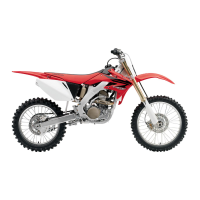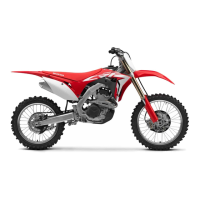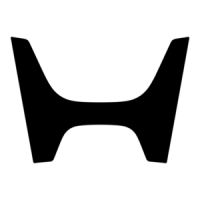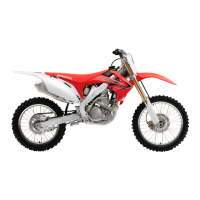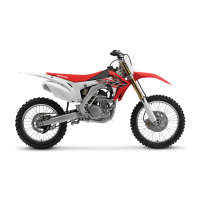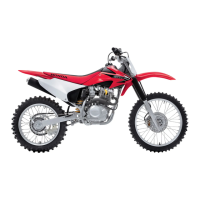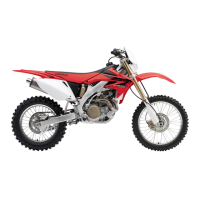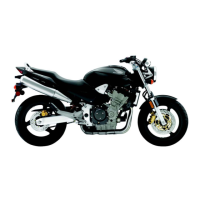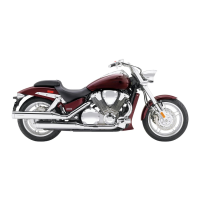
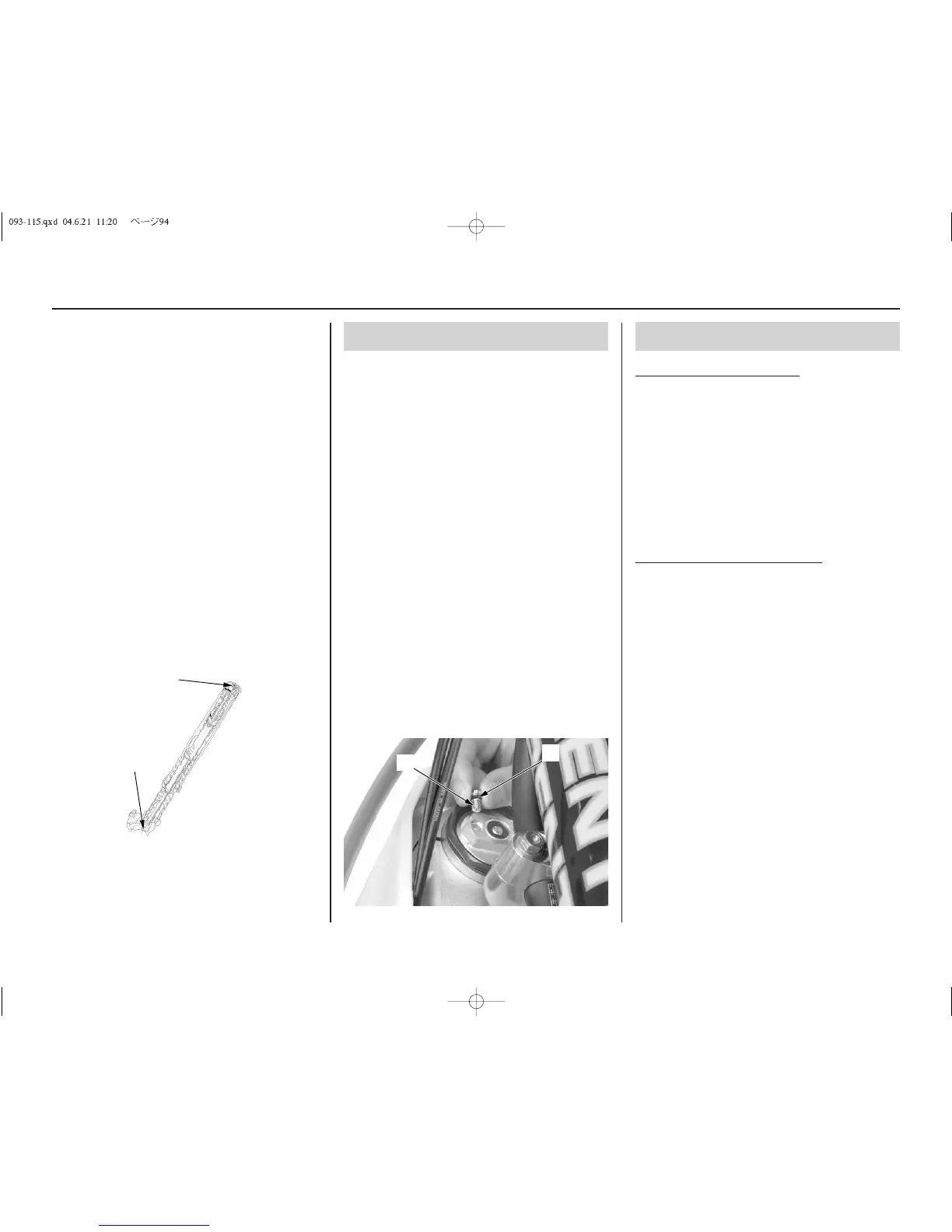 Loading...
Loading...
Do you have a question about the Honda CRF250R 2005 and is the answer not in the manual?
| Engine Type | Single-cylinder, four-stroke |
|---|---|
| Displacement | 249 cc |
| Bore x Stroke | 78.0mm x 52.2mm |
| Compression Ratio | 12.5:1 |
| Transmission | 5-speed |
| Valve Train | Unicam, four-valve |
| Ignition | CDI |
| Final Drive | Chain |
| Front Suspension | 47 mm inverted Showa cartridge fork with 16-position rebound and 16-position compression damping adjustability; 12.4 inches travel |
| Front Brake | Single 240 mm disc with twin-piston caliper |
| Rear Brake | Single 240 mm disc |
| Front Tire | 80/100-21 |
| Rear Tire | 100/90-19 |
| Wheelbase | 58.3 inches |
| Fuel Capacity | 1.9 gallons |
| Fuel System | 37mm Keihin FCR carburetor |
| Rear Suspension | Pro-Link Showa single shock with spring preload, 17-position rebound damping adjustability, and compression damping adjustment separated into low-speed (13 positions) and high-speed (3.5 turns); 12.4 inches travel |
| Curb Weight | 204 lbs |
Provides crucial safety recommendations and information for operating the CRF.
Discusses potential risks of installing non-Honda accessories or modifying the CRF.
Highlights the importance of reading and understanding safety labels on the CRF.
Illustrates and identifies the location of essential controls on the CRF motorcycle.
Guides on assessing personal readiness and understanding safety measures before riding.
Details the essential pre-ride inspection checklist to ensure the motorcycle is safe.
Provides essential safety advice for operating the CRF, especially regarding exhaust fumes.
Explains the correct procedures for starting, stopping, and handling a flooded engine.
Offers guidance on how to properly break in the CRF for optimal reliability and performance.
Emphasizes the importance of maintenance for safety, performance, and investment protection.
Details crucial safety precautions to follow during maintenance tasks to prevent injury.
Outlines recommended service intervals and procedures based on usage and time.
Provides guidelines for performing maintenance specific to competition riding conditions.
Covers essential checks and adjustments required before and after competition events.
Covers preparations for servicing, including component locations and removal procedures.
Covers maintenance procedures for fluids, filters, engine, and chassis components.
Provides recommendations for washing and maintaining the motorcycle's appearance.
Details how to adjust front suspension air pressure, compression, and rebound damping.
Explains rear suspension adjustments for spring preload, compression, and rebound damping.
Offers tuning advice for suspension based on different track surface conditions like sand or mud.
Provides a chart to diagnose and adjust suspension stiffness based on symptoms.
Guides on fine-tuning the carburetor for specific competition needs and conditions.
Discusses adjustments to fork height/angle and wheelbase for improved handling.
Explains how changing final drive ratios can optimize power delivery for track conditions.
Offers recommendations for choosing tire tread patterns and compounds for specific terrains.
Suggests adjustments for control positioning and handlebar setup for rider comfort and responsiveness.
Provides guidelines and recommendations for safely transporting the motorcycle.
Details procedures for preparing and storing the Honda for extended periods.
Offers tips for environmentally responsible motorcycle ownership and waste disposal.
Presents flow charts to diagnose and resolve common performance issues at low/high speeds.
Explains how to identify the motorcycle's serial numbers (VIN, frame, engine).
Lists key dimensions, capacities, and technical specifications of the motorcycle.
Provides a comprehensive list of torque specifications for various fasteners and components.
Explains how to adjust the carburetor for optimal performance at high altitudes.
Discusses the use of oxygenated fuels and their potential effects on the motorcycle.
Recommends recording tuning, maintenance, and racing data for performance analysis.
Lists optional parts available from the Honda dealer for customization and performance enhancement.
Suggests essential spare parts and tools to carry for event preparedness and quick repairs.
Illustrates the motorcycle's electrical system wiring for diagnostic purposes.
Information on obtaining the official Honda Service Manual and Common Service Manual.
Provides contact information and procedures for providing feedback to Honda.
Guidance on interacting with your Honda dealer for services and information.
Details membership benefits and activities of the Honda Rider’s Club of America.
